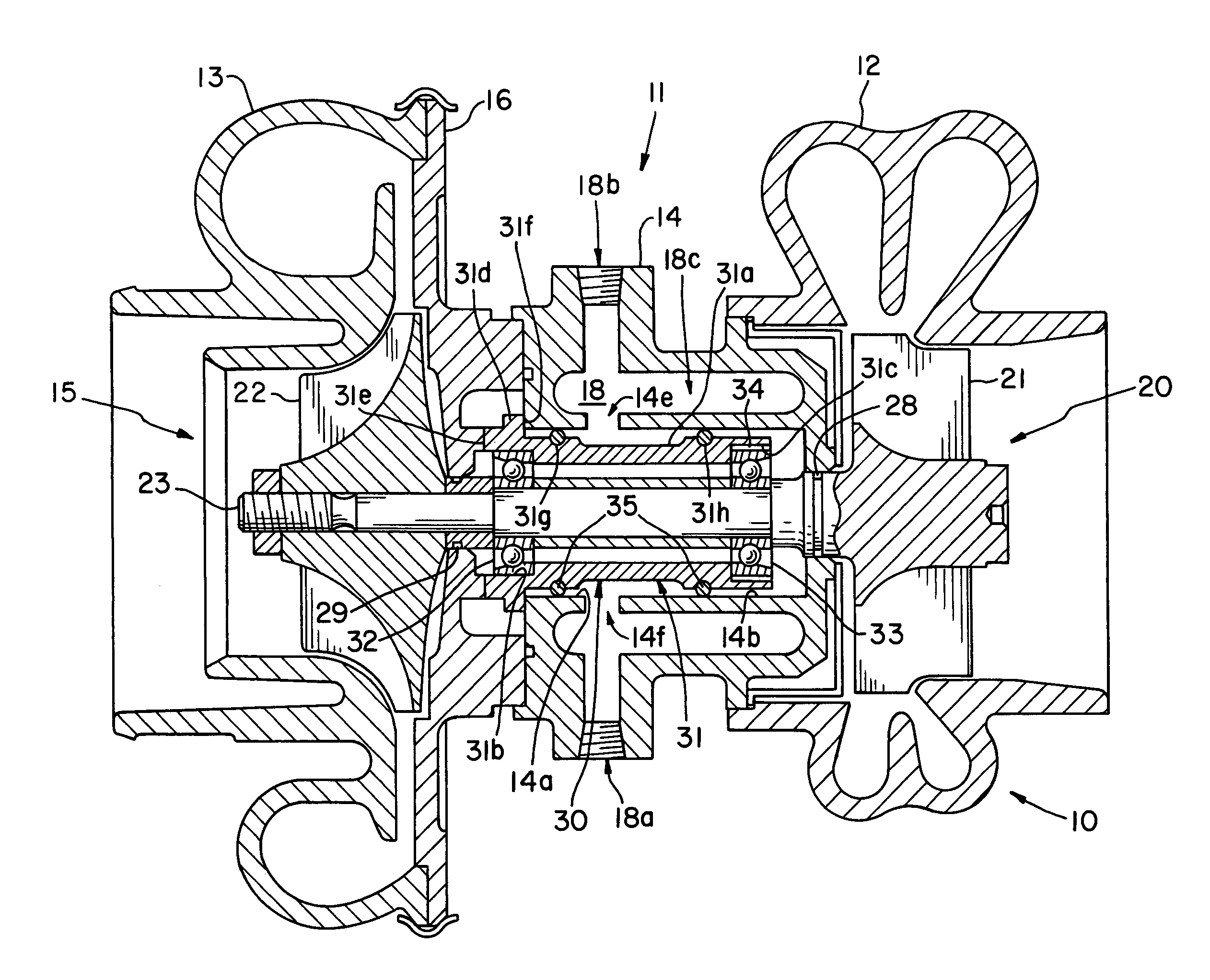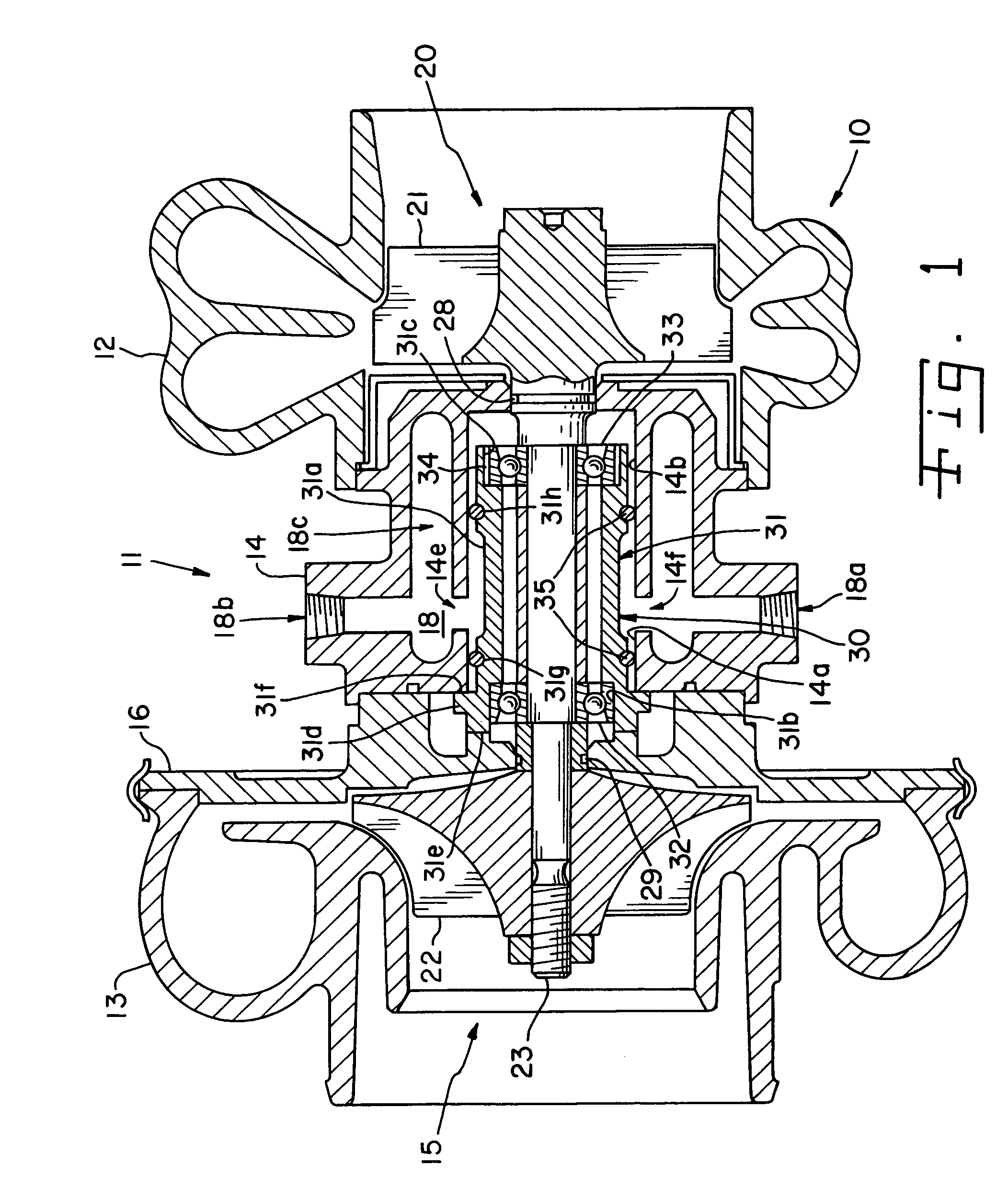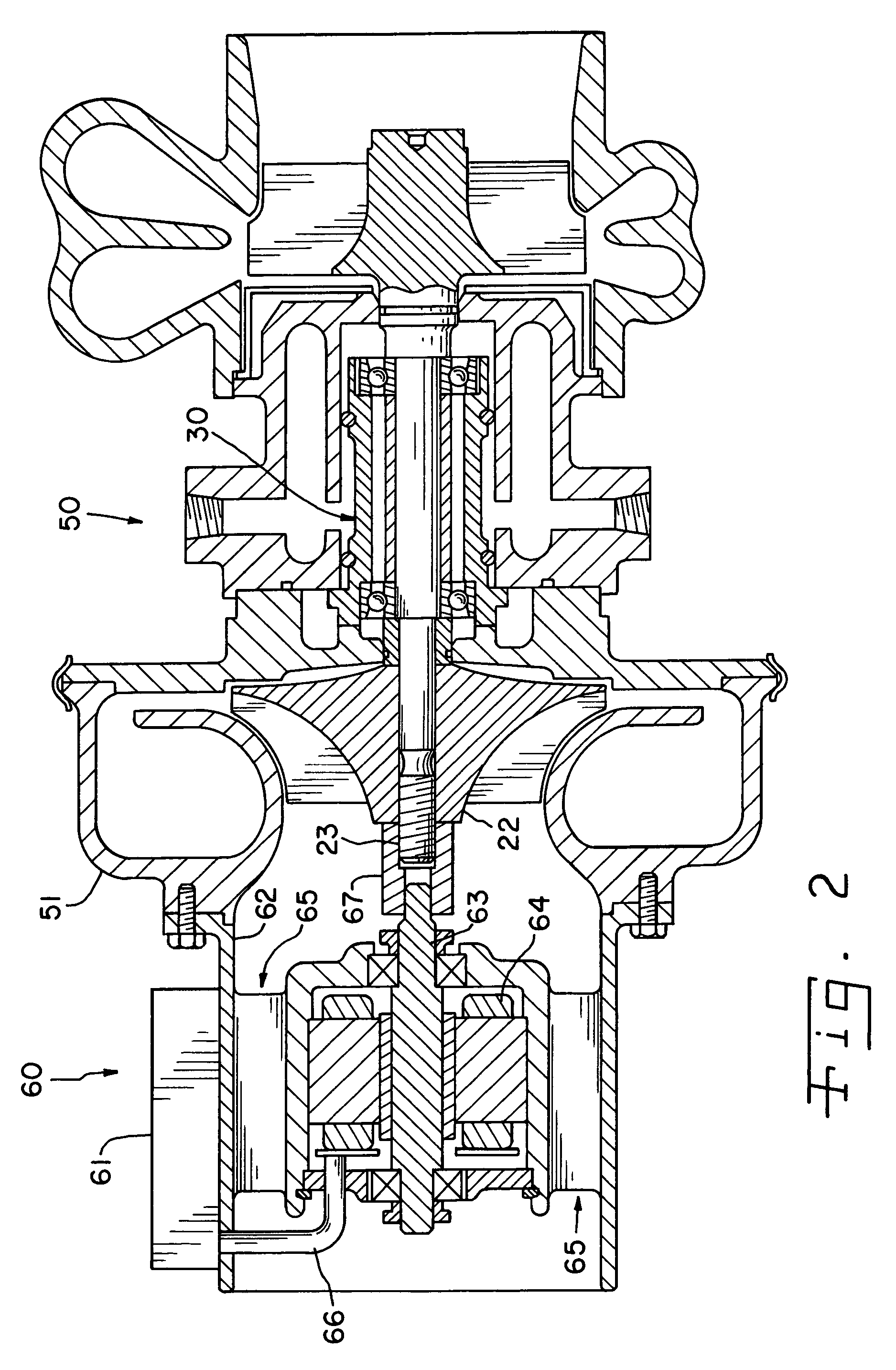Bearing system for high-speed rotating machinery
- Summary
- Abstract
- Description
- Claims
- Application Information
AI Technical Summary
Benefits of technology
Problems solved by technology
Method used
Image
Examples
Embodiment Construction
[0023]The bearing system of this invention is adapted to support, within a stationary element of a machine, a high-speed rotating shaft. A turbocharger 10, as illustrated in FIG. 1, is one example of a machine in which the invention may be advantageously employed, and the more detailed description of the invention that follows is in the context of the turbocharger, as illustrated in FIG. 1, and a motor-assisted turbocharger, as illustrated in FIG. 2.
[0024]As set forth above, FIG. 1 illustrates a turbocharger 10 of the type that is frequently used to supply charge air to the cylinders of an internal combustion engine. As well known in the art, the turbocharger 10 has a stationary housing 11, comprised of an exhaust gas volute 12, a compressor casing 13 and bearing housing 14 that encompasses the rotating assembly 20. The rotating assembly 20 is driven by the action of exhaust gas from an internal combustion engine (not shown) directed from the exhaust gas volute through the turbine w...
PUM
 Login to View More
Login to View More Abstract
Description
Claims
Application Information
 Login to View More
Login to View More - R&D
- Intellectual Property
- Life Sciences
- Materials
- Tech Scout
- Unparalleled Data Quality
- Higher Quality Content
- 60% Fewer Hallucinations
Browse by: Latest US Patents, China's latest patents, Technical Efficacy Thesaurus, Application Domain, Technology Topic, Popular Technical Reports.
© 2025 PatSnap. All rights reserved.Legal|Privacy policy|Modern Slavery Act Transparency Statement|Sitemap|About US| Contact US: help@patsnap.com



